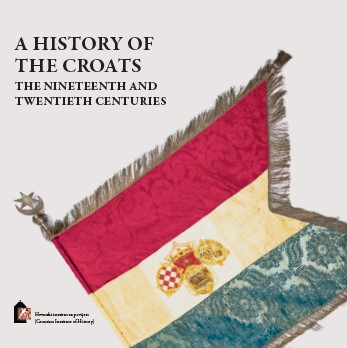BETWEEN THE TWO WORLD WARS (1918-1941)
BETWEEN THE TWO WORLD WARS (1918-1941)
Author(s): Mario Jareb, Hrvoje Čapo
Subject(s): Cultural history, History of Church(es), Governance, Economic history, Political history, Government/Political systems, Political behavior, Politics and religion, History of Education, Nationalism Studies, Pre-WW I & WW I (1900 -1919), Interwar Period (1920 - 1939), WW II and following years (1940 - 1949), Inter-Ethnic Relations, Geopolitics, Peace and Conflict Studies
Published by: Hrvatski institut za povijest
Keywords: The Stete of Slovenes Croats and Serbs; Creation of Yugoslavia; Treaty of Rapallo; Italian administration; Stjepan Radić; Croatian Peasant Party; Economic history; Cultural history; Education;
Summary/Abstract: Between the two world wars, the Croatian society developed in a multinational state under the rule of the Serbian royal dynasty of Karađorđević. The newly created Yugoslavia was, as Robert Gerwarth has observed in his book The Vanquished: Why the First World War Failed to End, 1917-1923 (p. 14) a “‘multi-national empire in miniature’, but ‘with reversed ethnic hierarchies’ than the failed Austro-Hungary Monarchy.” There are several reasons why the State of SCS united with the Kingdom of Serbia, the key ones being the military-political goals of Serbia and Italy. The Kingdom of Serbia announced at the very beginning of the war that it would fight to achieve this goal and the Serbian Prime Minister Nikola Pašić understood unification as expanding the territory and creating a Greater Serbia. Furthermore, a group of Croatian, Slovenian, and Serbian politicians who had been working abroad as the Yugoslav Committee since 1915 advocated South Slavic unification. This group vehemently opposed the provisions of the secret Treaty of London of 1915, which promised Italy the Eastern Adriatic with a majority Croat population in exchange for entering the war on the side of the Entente. Finally, in the weakened Austro-Hungarian monarchy, a Yugoslav club of Croatian and Slovenian politicians who advocated a trialistic arrangement of the Monarchy was active from 1917. The Kingdom of Serbia had an international reputation and position that exceeded the influence of the Yugoslav Committee with which it negotiated the draft of the future state. The most specific result of their cooperation was the Corfu Declaration of July 1917, by which Nikola Pašić on behalf of Serbia and Ante Trumbić on behalf of the Yugoslav Committee confirmed that the new state would be based on the principles of equality and freedom of choice – only the instruments ensuring the protection of the citizens of the State of SCS were not envisaged. The state of SCS was basically an unacknowledged state formed on the ruins of the Habsburg Monarchy, as it was only recognized by the Kingdom of Serbia. It was clear that it was only a transitional solution towards unification with Serbia.
Book: A History Of The Croats: The Nineteenth And Twentieth Centuries (vol. 2)
- Page Range: 245-300
- Page Count: 56
- Publication Year: 2022
- Language: English
- Content File-PDF

